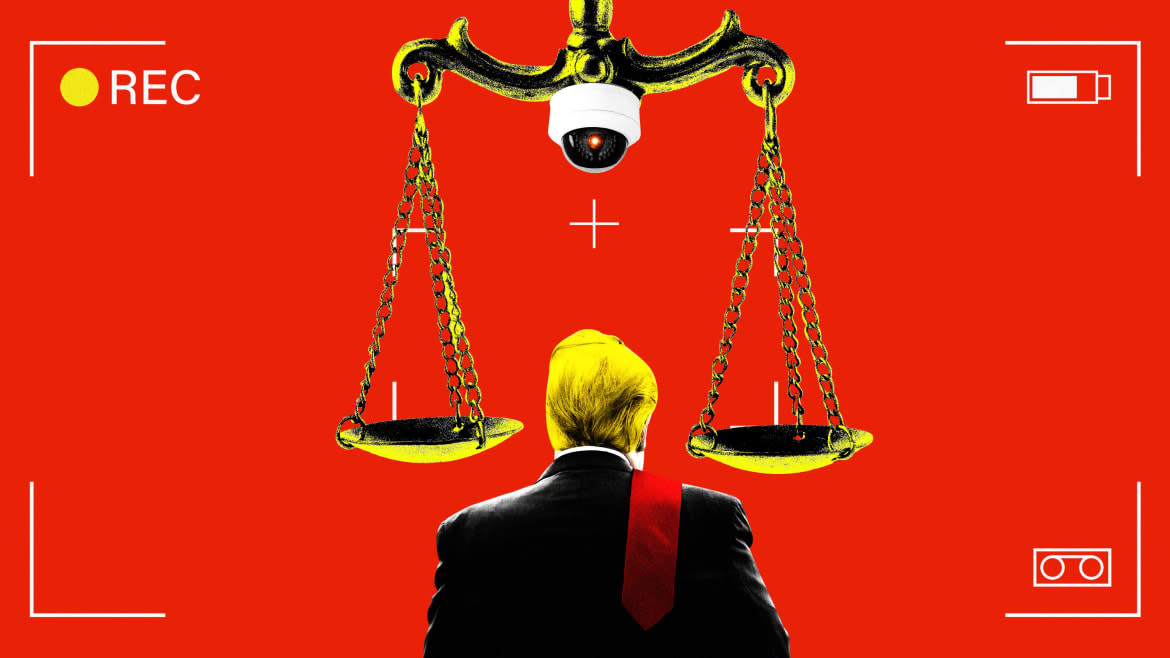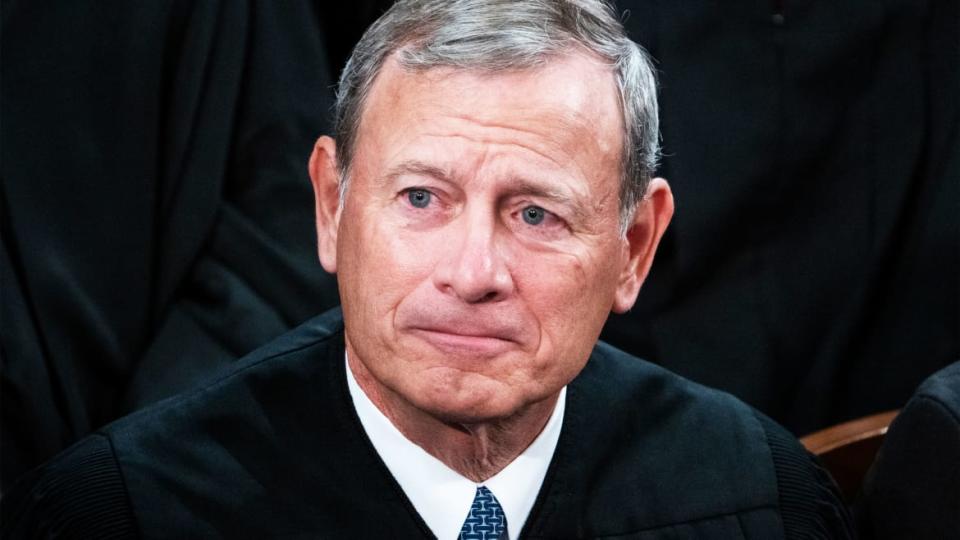Let the Public Watch Trump’s Trial, Put Cameras In the Courtroom

- Oops!Something went wrong.Please try again later.
- Oops!Something went wrong.Please try again later.
- Oops!Something went wrong.Please try again later.
When the U.S. government presents its case in court against former President Donald J. Trump, the best way for voters to hear each side’s version of the truth is to allow millions of Americans into the room where it happens. All it takes is cameras.
With yet another indictment imminent, this one related to Trump and his allies seeking to fraudulently overturn the vote in Georgia, Trump’s lawyers are furiously spinning their client’s side. They say it was all First Amendment-protected speech when he said the election was stolen, and that it was “aspirational” on the former president’s part to seek to overturn the election.
The importance of voters seeing for themselves in real time with cameras in the courtroom should be evident, or else democracy will drown in the spin. Cameras are allowed in most state courts with some restrictions—but remain banned in all federal criminal trials, “a vestige of a time long past,” says Gabe Roth, executive director of the advocacy group Fix the Court.
Trump Was Indicted for Being Wrong—Which Is Not a Crime
For generations accustomed to watching Judge Judy, courtroom cameras are commonplace. The televised trial earlier this year of Alex Murdaugh, a South Carolina country lawyer convicted of killing his wife and 22-year-old son, was viewed by millions and dubbed the trial of the century.
The 2021 trial and conviction of Minneapolis police officer Derek Chauvin for the murder of George Floyd “went off without a hitch,” says Roth, crediting the presiding judge. “It takes a strong judge to maintain decorum and to follow certain rules of the road. Jurors are never shown, and there’s always the ability to turn the cameras off.”
Judge Tanya Chutkan, the Obama appointee overseeing Trump’s indictment for conspiracy to defraud the United States and conspiracy to obstruct an official proceeding, has presided over the trials of multiple Jan. 6 rioters. Judging by her no-nonsense handling of the Trump team’s initial requests for delays, she would have no trouble managing an unruly defendant playing to the cameras.
But it’s not up to her. The decision is in the hands of Chief Justice John Roberts in his role as head of the Judicial Conference of the United States, the body that oversees federal courts.
The Right Needs to Ask: ‘Why Do These Racists Keep Getting Hired by Us?’
It meets only twice a year to consider policy and administrative issues and it moves very slowly, if at all. The chief justice could use his powers of persuasion to get the conference to petition for a change in the rules. This is completely within his power, though the cautious chief is unlikely to move without a lot more pressure.
“I don’t see him doing that, so this has to be more bottom-up than top-down,” says Roth, reminding that “It took a once in a hundred years pandemic for the Supreme Court just to get live audio.”
Rep. Adam Schiff (D-CA), the lead House manager during Trump’s first impeachment, sent a letter after last week’s arraignment with the signatures of 37 House Democrats asking the Judicial Conference to “explicitly authorize the broadcasting of court proceedings in the cases of United States of America v. Donald J. Trump.” The phrasing of the letter suggests the ruling could be limited to these cases and not be a blanket order for cameras in all federal courtrooms. As always, individual judges would retain some discretion.
The Fulton County Case Against Trump May Be the Most Serious—and Imminent
The Judicial Conference has flirted with the idea on and off since the 1980s when then-Chief Justice William Rehnquist appointed an ad hoc committee on cameras in the courtroom. A pilot program was put in place between 1991 and 1994, with the Judicial Conference concluding cameras have an intimidating effect on some witnesses and jurors, so they were denied in civil proceedings. A separate amendment that would have allowed cameras in criminal proceedings was also turned down.

Supreme Court Chief Justice John Roberts attends President Joe Bidens State of the Union address in the House Chamber of the U.S. Capitol on Tuesday, February 7, 2023.
A second pilot program from 2011 to 2015 ended with the Second Circuit allowing cameras in some civil cases, sometimes working with C-Span, and with the Ninth Circuit (known for being the most liberal of the eleven circuits) livestreaming all their civil cases.
A third pilot program, recently completed, approved live audio in federal claims court, as well as international trade and bankruptcy courts.
The main objection to televising a trial is the potential for turning the proceedings into a circus.
A 1965 Supreme Court ruling overturned the conviction for swindling of Billy Sol Estes, a Texas con man and friend of then-President Lyndon Johnson, on the grounds that his preliminary hearing had devolved into a circus atmosphere as dozens of cameramen staked out the courtroom. Justice John Marshall Harlan, who concurred with the majority decision, wrote in a side note words that today seem prescient: “The day may come when television will have become so commonplace an affair in the daily life of the average person as to dissipate all reasonable likelihood that its use in courtrooms may disparage the judicial process.”
Cameras are everywhere, why would we exclude them from one of the most important moments in history? Especially when we’re talking about a single “pool” camera that would not be obtrusive.
The Hidden Messages in the New Trump Indictment
Given the magnitude of a former president on trial for attempting to overthrow an election and remain in power, it seems the bureaucracy—the Judicial Conference and the chief justice—will have to respond.
And if it’s not cameras, a live audio feed should be the fallback position, says Roth. “The unique situation of this trial in American history demands a novel approach, and from the federal perspective, that means cameras. Yes, we want cameras in the courtroom, but if the justice system is willing to meet halfway, a live audio feed would be better than nothing.”
The system that SCOTUS uses has a 10-second delay, a feature that allows some leeway. If a certain defendant creates a scene, the judge can halt the proceedings and put him in jail. And the country will be along for the ride, seeing the evidence presented and in a much better position than many people are today to accept what the jury decides.
Get the Daily Beast's biggest scoops and scandals delivered right to your inbox. Sign up now.
Stay informed and gain unlimited access to the Daily Beast's unmatched reporting. Subscribe now.

